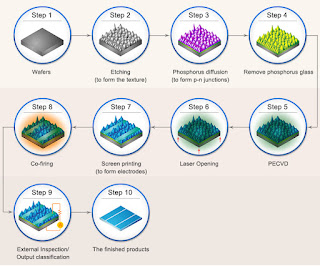Concentrating Photovoltaic Solar Panel Technology
Based on the principal that a solar cell receiving more light energy will produce more electricity, concentrating photovoltaic solar panels simply involve a method ( usually using a lens or mirrors) to concentrate more sunlight onto a photovoltaic cell.
As fewer cells are then required for the same area of panel (or light capturing area) it may then become economical to use a highly efficient multi-junction cell.
As fewer cells are then required for the same area of panel (or light capturing area) it may then become economical to use a highly efficient multi-junction cell.
Potentially, this type of panel has the following advantages:
- Has a higher overall efficiency, capturing more solar energy per meter squared resulting in a smaller area of panels required for a particular output. Resulting efficiency levels can approach 50%.
- Potentially lower cost per watt of output due to lower number of solar cells required, while the material cost and manufacturing process of the optics (light concentration mechanism) is relatively inexpensive.
- Lower use of environmentally unfriendly chemicals involved in the panel manufacuring process due to lower number of pv cells.
- Where the concentration is such that cooling of the photovoltaic module is required, a panel may have the ability to output heat at the same time as electricity.
There are however drawbacks:
- In all but the lower levels of concentration, heat needs to be dissipated from the cells. Cooling is necessary as cell efficiency is significantly reduced at higher temperatures, or in extreme situations, cells may be damaged.
- In all but the lower levels of concentration a tracker system will be required to keep the concentrated light focussed on the cell.
- As diffuse light cannot be effectively concentrated, concentrating PV panels are best suited to areas with a high level of clear sunshine.
Although research has continued on concentrating photovoltaics for many years, they have not made their mark on the industry, and where they have been used, it has been in large scale projects.
CPV panels that have been produced have come in "various shapes and sizes" with no obvious design leading the field.
CPV panels that have been produced have come in "various shapes and sizes" with no obvious design leading the field.

Comments
Post a Comment